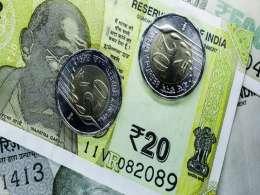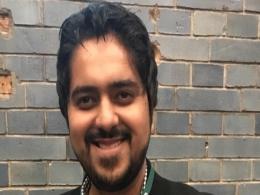There are times when even the die-hard Indian pride in me is shaken to the core. This submission is perhaps more from the heart (and therefore, more emotional than it would have been otherwise), but within it, there are clear opportunities for creating entrepreneurial successes. Here, I will focus on the current deplorable state of healthcare in India, even at some of the supposedly best medical institutions in the country.
My wife and I have just been through a harrowing experience involving our eight-year-old daughter and it has brought to the forefront everything that is tangibly and intangibly broken with the Indian healthcare system. Rather than going into the gory details, I will try and summarise the sequence of events, followed by some key takeaways and suggestions for the entrepreneurs in this sector. Our daughter came down with a fairly severe (but well understood) urinary tract infection (UTI) in mid-December. Our local paediatrician, after prescribing some medication which had no impact, suggested we have an ultrasound done at the lab next door (which he, of course, owned). The lady, whom neither my wife nor I believed was qualified, came up with a diagnosis of gall stones, which later proved to be completely wrong. The ultrasound equipment was clearly outdated. We knew we had to get her admitted given her condition, but the local hospital didn’t have any bed available, forcing us to head an hour away to one of the most reputable institutions in Bangalore (that shall remain nameless for now, but most people should be able to guess).
The series of events that took place was an absolute tragedy of errors. After being admitted around 10 pm, she was not administered any medication, either for her pain or for the infection itself throughout the night. In the morning, when the paediatrician and urologist came, they were insistent on prescribing an antibiotic that is nephro-toxic (i.e., potentially toxic for the kidneys, which were compromised in our daughter’s case). Neither doctor showed any compassion for the eight-year-old patient or bedside manners, for that matter, to comfort her.
During our conversation (or more appropriately, confrontation) with the physicians, a couple of pieces became absolutely clear – they didn’t particularly like dealing with parents who were somewhat educated in the field of medicine (my wife spent a couple of years with Pfizer and my brother-in-law is a urologist in the USA), and are simply not used to their decisions being questioned. At one point, we suggested to the urologist that it might help if he consulted with another doctor who had the our daughter’s history for several years in the USA (a completely rational offer given that one would want as much relevant information to treat a particular condition and therefore, improve the chances of both quick recovery, as well as minimise any side-effect). To that, his response was a terse, “I know what I am doing. I don’t need to consult with anyone else.” Now, granted, that India provides an incredibly fertile ground for any medical professional as he/she sees a broader and deeper set of cases than his/her counterparts are likely to do in the USA or Europe. But this has also led to a sense of arrogance and god-like behaviour which is probably completely counter to the oath that these same professionals take when they are bestowed the title of a Medical Doctor. Then again, several folks were caught recently in Bangalore doing the Munnabhai imitation in order to get their medical degrees.
Back to the story… After the initial debate with the first pair of doctors, we switched to another reputable paediatrician (and a urologist) who was known to be more caring and mindful of the parents’ concerns and opinions. The issue we ran into was that while the previous duo was overly aggressive in their treatment, this gentleman was on the other extreme and basically ended up taking our daughter off a particular IV antibiotic prematurely (before the bacteria had been fully addressed) and switching to an oral (much less potent) antibiotic that is nowhere close to being as effective (and is known not as a medicine for treatment of severe infection, but more for preventative measures while an individual is relatively healthy). After a day of the oral medicine, he instructed our daughter to be discharged, even when she still had spiking fevers (a tell-tale sign that bacteria are still very much present in the system).
Later, we found out, just to make matters worse, that the dose he had given was half of what it should have been. By the time all of this was figured out and the dosage increased, the bacteria had mutated and multiplied. By the time all of this was over, we had spent a month shuttling between doctors and hospitals, getting multiple IV drips daily and spending Christmas and New Year’s Eve in hospitals. The situation rippled to a point where we had to administer a drug thrice daily that cost Rs 3,000 per dose or Rs 9,000 daily for 14 days. I guess I have to look at this situation as a ‘glass partially full.’ All of this happened when my daughter’s school was closed due to the Christmas holidays; I could afford to take some time off and it gave me a chance to bond with her to, from and at the hospital, as well as during the hour when the drip was going on. Also, I got a chance to drive in Bangalore on a regular basis (and I quite enjoyed it, to be honest).
From mid-December till roughly mid-January, our family’s lives were turned upside down. All the while, my wife and I kept thinking that at least we know a little bit about medicine, and have some strings we can pull, contacts we can rely on and financially able to afford expensive medication. But what about the aam aadmi? To the common man, doctors are truly equivalent to God. If they cure a condition, patients and their families are forever indebted to the physicians. And if, per chance, the situation worsens, sometimes to a fatality, they chalk it up to ‘kismat, fate, destiny, and the will of (the other) God.’ I was recently speaking with a portfolio CEO who, jokingly (albeit accurately), said, “Aam aadmi in India means ‘you’re @#$%.’”
I think India is ready for a policy overhaul in healthcare. Currently, as far as I can tell, there is virtually no accountability that doctors have (by the way, the fine institution where most of the above happened had an MD, CEO and president, in part to make it easier for a finger-pointing exercise I imagine). In India, hospitals effectively provide infrastructure for ‘consulting physicians’ who have one or two clinics in addition to their hospital responsibilities. It’s a business for them, a game of numbers and really not much more than that.
One of the reasons for the situation getting out of control was that no doctor would take complete ownership of the patient and moreover, there are often cases that require collaboration among various specialists – a urologist, a nephrologist and a paediatrician in our case, which simply didn’t happen. We ran into a situation where the urologist was more on top of the situation, but didn’t want to step on the paediatrician’s toes and therefore, did not opine as solidly as he should have. There were times when we had to visit two different hospitals under the same umbrella organisation, but the systems are completely compartmentalised. We needed two different IDs, medical record numbers and therefore, ended up with two distinct databases with no interoperability or interconnectivity, which seemed absolutely insane.
As horrifying as the entire experience was, it opened my eyes to the universe of innovations that need to be identified and implemented. In my humble opinion, they fall in four general categories – Discovery, Collaboration, Interoperability and Consolidation. On the Discovery front, there needs to be a database of physicians and specialists, with an underlying recommendation engine, especially given the fact that there are constant inter-city migrations and there needs to be a mechanism to identify doctors in a particular geography by their specialty and rating. The best need to be recognised and the laggards need to have a mechanism to light a fire under their behinds to improve their quality and therefore, rankings, either on technical competence, timeliness, care and responsiveness (basically a CSAT).
Docassist, Healthcare Magic and others are trying to tackle this issue. Collaboration requires a process and a platform (online) for different medical personnel to collaborate while being able to access critical data, lab results, scans, medical reports, etc. Mediangels out of Mumbai is one such start-up trying to address just that need on a global scale. Interoperability is imperative between and among different medical institutions for efficacy and efficiency. This requires some heavy lifting and technology to extract data in virtually any format, and thus provide standardised interconnects for information-sharing.
Finally, there is consolidation. That means that data should to be transferrable to the Cloud, so that information can be accessed by any authorised person, anytime, anywhere via any connected device (by the way, the Tricorder Xprize competition is trying to address the same issue by providing the data in the palm of your hand). Just like the platforms available for financial asset management or digital asset management, there needs to be a centralised location for personal health management, with the entire history of an individual available in a format that is digestible and easily analysed. I know for a fact that there are several companies doing bits and pieces (clearly entrepreneurs are smart enough to realise the gaps and create solutions to address those shortcomings) and several will fill these gaps in the years to come.
Bottom line: Although 2011 ended on an extremely stressful note for the ‘not so’ Jolly family, it opened my eyes to the low-hanging fruit that exists within the Indian healthcare sector, even at some of the best hospitals in India. It may not be trivial to address many of the issues I have highlighted, but with patience, persistence and technology that can be leveraged, start-ups, more likely than large companies, will improve India’s debilitated healthcare system, and by doing so, I am convinced, improve and save untold lives.





